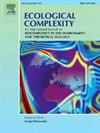红腹草的研究进展:全球文献计量学视角和新趋势
IF 3.1
3区 环境科学与生态学
Q2 ECOLOGY
引用次数: 0
摘要
在安第斯高原生态系统中,pennata种群起着至关重要的生态作用。本研究旨在批判性地评估pennata的演变,范围和全球科学研究的重点,以确定趋势,差距和机会,可以指导该物种的未来保护和生态研究。为此,我们对1974年至2024年发表的73篇文章进行了文献计量学分析。为此,使用了R中的文献计量工具Biblioshiny和VOSviewer。研究结果表明,考虑到秘鲁预计50年的灭绝风险,迫切需要扩大对该物种的科学研究。此外,还确定了较低的发表率和几个具有未来研究潜力的新兴研究领域。重点介绍了该领域的主要作者、重要关键词、有影响力的来源和高影响力的出版物。特别是通过Córdoba大学应用动物学中心,阿根廷因其重大科学贡献和国际合作而脱颖而出。虽然有圈养繁殖美洲豹的报道,但在野外没有成功的重新引入案例。相比之下,在没有直接人为干预的自然保护区和半圈养条件下,观察到种群数量的增加,这表明与目前的方法相比,美洲红毛鼠的保护策略发生了转变。本文章由计算机程序翻译,如有差异,请以英文原文为准。
Advances in Rhea pennata: A global bibliometric perspective and emerging trends
Rhea pennata populations play a vital ecological role in the Andean highland ecosystems. This study aims to critically assess the evolution, scope, and focus of global scientific research on Rhea pennata, in order to identify trends, gaps, and opportunities that can guide future conservation and ecological studies on the species. For this purpose, we realize a bibliometric analysis of 73 articles published from 1974 to 2024. For this purpose, the bibliometric tools Biblioshiny in R and the VOSviewer were utilized. Results reveal an urgent need to expand scientific research on this species, given its projected 50-year extinction risk in Peru. Furthermore, a low publication rate and several emerging research areas with potential for future investigation were identified. Key authors, significant keywords, influential sources, and high-impact publications in this field were also highlighted. Argentina stands out, particularly through the Applied Zoology Centre of the University of Córdoba, for its major scientific contributions and international collaborations. Although there are reports of captive breeding of the Rhea pennata, no successful reintroduction cases in the wild have been documented. In contrast, population increases have been observed in protected natural areas without direct human intervention and in semi-captive conditions, suggesting a shift in conservation strategies for the Rhea pennata compared to current approaches.
求助全文
通过发布文献求助,成功后即可免费获取论文全文。
去求助
来源期刊

Ecological Complexity
环境科学-生态学
CiteScore
7.10
自引率
0.00%
发文量
24
审稿时长
3 months
期刊介绍:
Ecological Complexity is an international journal devoted to the publication of high quality, peer-reviewed articles on all aspects of biocomplexity in the environment, theoretical ecology, and special issues on topics of current interest. The scope of the journal is wide and interdisciplinary with an integrated and quantitative approach. The journal particularly encourages submission of papers that integrate natural and social processes at appropriately broad spatio-temporal scales.
Ecological Complexity will publish research into the following areas:
• All aspects of biocomplexity in the environment and theoretical ecology
• Ecosystems and biospheres as complex adaptive systems
• Self-organization of spatially extended ecosystems
• Emergent properties and structures of complex ecosystems
• Ecological pattern formation in space and time
• The role of biophysical constraints and evolutionary attractors on species assemblages
• Ecological scaling (scale invariance, scale covariance and across scale dynamics), allometry, and hierarchy theory
• Ecological topology and networks
• Studies towards an ecology of complex systems
• Complex systems approaches for the study of dynamic human-environment interactions
• Using knowledge of nonlinear phenomena to better guide policy development for adaptation strategies and mitigation to environmental change
• New tools and methods for studying ecological complexity
 求助内容:
求助内容: 应助结果提醒方式:
应助结果提醒方式:


